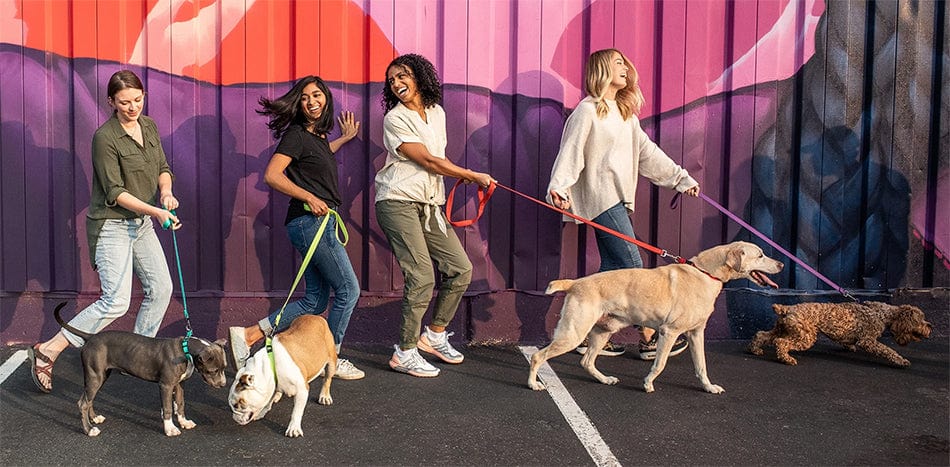Your cart is empty. Let's fix that!


Although we all like to believe that our dogs are perfect, we also know that they can misbehave on occasion. There are so many theories out there to help curb their bad behavior. However, many experts agree that positive reinforcement dog training is the most effective method.
Training can be very time consuming and frustrating, but once the two of you make progress together, it will strengthen your bond forever! It’s important to teach your dog basic commands for their safety and the safety of others. Commands like sit, in, out, or stay should be the first things they learn. When your dog is equipped with these skills, you will feel safe and in control introducing them to new people and other dogs. Before you even attempt any basic training, you first need to establish your respective roles. Your pup must believe that you are the alpha of the pack, or they will never submit to your commands.
Training tends to have the best results when you reward your dog for good behavior. This works particularly well when you give them something they love; such as food, a favorite toy, or an extra scratch behind their ears. Most dogs are incredibly food motivated, and respond well to treats. Since your fur baby can’t “speak” to you, you need to establish a form of communication you can both understand. If you want your dog to bark less, you first have to understand what’s causing them to bark. Another common bad behavior from your good boy or good girl is biting, which can also be curbed with positive reinforcement.
It’s important to balance positive and negative praise. Positive reinforcement is a method that involves rewarding your dog for the behavior you like and ignoring them for the behavior that you dislike. Sometimes, you need to get your dog’s attention, like making sure they “leave it alone!” when they go after the piece of chocolate cake you just dropped on the floor. However, negative commands or actions shouldn’t be used in training. Fear only provides temporary, short-term results, and can frighten or traumatize your pup. Additionally, punishment can be confusing, since your dog might not understand what exactly they are being punished for. If you yell at them for peeing on the rug, they may think that they will only get in trouble if they urinate in front of you, and continue having accidents in the house when you’re not around.
Positive reinforcement allows you to communicate clearly with your fur baby. You decide what you want your dog to do and let it know by offering rewards when the dog does the intended action. When you reward your dog for doing things correctly, they’re more likely to repeat those good behaviors, because dogs aim to please.
Treat this list as your dog training positive reinforcement guide. With these tips, you can say “bye, fur-licia” to bad behavior!
1. Spend time together
Give in to your stage five clinger. Dogs hate to be neglected, and are always seeking your approval. Show them you care by spending time with them. Use nice tones only, never yell at them.
2. Express forgiveness
As if we could ever stay mad at those puppy eyes! Punishment can make the situation worse by causing your pup to become more stressed and anxious. If they do something wrong, be patient and show them that you forgive their misbehavior.
3. Challenge your dog
Mental stimulation is crucial to your dog’s development. If completing new tasks or tricks are rewarded with treats, there is an even greater incentive for your dog to broaden their pawsome skills.
4. Reward your dog
Treat yo’self, and your dog! We feel good when we are given praise, and your pup is no different. Pat them on the head or tell them how good they are, which will encourage more good behavior from them.
5. Keep training consistent
Ensure that everyone in your family is using the same commands and types of rewards to keep things fun and consistent for the whole family. It’s a paw-ty for everyone!